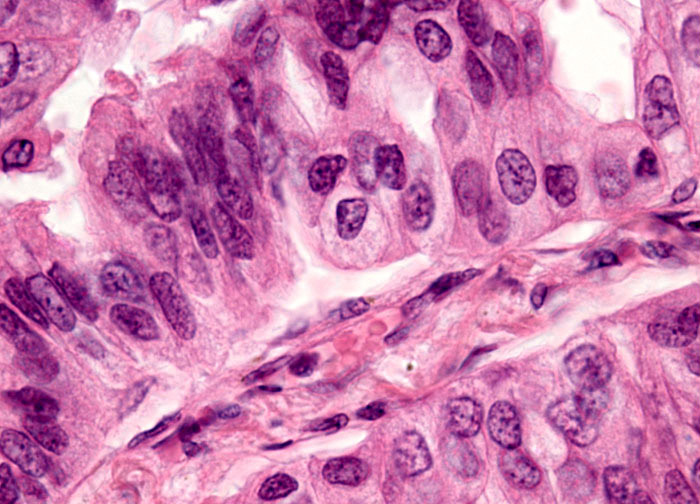
Alveolar Cell Carcinoma at 40x Magnification
Carcinomas of the lung are generally classed into two fundamental types: small cell carcinomas and non-small cell carcinomas. Small cell carcinomas account for about 20 to 25 percent of all cases of lung cancer and are usually more aggressive than non-small cell carcinomas. Only in very rare instances do small cell carcinomas ever appear in people who have never smoked cigarettes or other tobacco products. Non-small cell carcinomas often grow and spread more slowly than small cell carcinomas and are usually further subdivided into several subtypes of cancer. One subtype of non-small cell carcinoma is adenocarcinoma, which accounts for approximately 35 percent of all cases of primary lung cancer diagnosed in the United States and is characterized by its development in the lining or inner surface of an organ. A variant of adenocarcinoma is alveolar cell carcinoma, which originates in the epithelia of alveoli, the small, capillary-rich air sacs of the lung that are the site of oxygen and carbon dioxide exchange.













